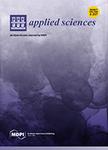版权所有:内蒙古大学图书馆 技术提供:维普资讯• 智图
内蒙古自治区呼和浩特市赛罕区大学西街235号 邮编: 010021

作者机构:Chinese Acad Sci Aerosp Informat Res Inst Beijing 100094 Peoples R China Univ Chinese Acad Sci Beijing 100190 Peoples R China
出 版 物:《APPLIED SCIENCES-BASEL》 (Appl. Sci.)
年 卷 期:2025年第15卷第3期
页 面:1517-1517页
核心收录:
基 金:National Key R&D Program of China Aerospace Information Research Institute, Chinese Academy of Sciences 2022YFB3903000 2022YFB3903005
主 题:scientific balloon fluid-structure interaction CEL method dynamic balloon shape sail shape
摘 要:Scientific balloons provide an inexpensive and reliable platform for near-space scientific experiments. The analysis of the balloon geometry and forces has always been a major concern for balloon designers. Most previous studies have focused solely on the fully inflated shapes and forces of balloons, analyzing only the membrane structure and simplifying the effects of internal and external gases into a gradient pressure difference. This approach lacks consideration of the fluid-structure interaction (FSI) of scientific balloons. This paper utilizes the Coupled Eulerian-Lagrangian (CEL) method in the Abaqus/Explicit simulation environment to analyze the FSI effects of scientific balloons under the influence of internal helium and external air. Three typical working conditions of scientific balloons are selected for simulation analysis. First, a three-dimensional spherical balloon is simulated during the ascent process to verify the correctness of the CEL simulation framework. This also demonstrates the membrane folding characteristics during balloon ascent, which could not be calculated in previous two-dimensional axisymmetric simulations. Next, the study explores balloon shapes that deviate from quasi-static pressure distributions due to the motion of internal helium. These include the mushroom shape observed during the dynamic launching of the balloon on the ground and the sail shape caused by lateral airflow. The mushroom shape arises from the sudden loss of the bottom constraint, causing the internal helium to move upward while being resisted by the air at the balloon s top. The simulation successfully replicates the rapid waist transition and the downward concavity at the top due to air resistance, while also providing the corresponding force distribution. For the sail-shaped condition, the simulation analyzes the balloon s tilt angle and the characteristic upturn of its windward surface. By a comparison with no-wind conditions, this study quantifies the imp